Identifying Lamb's Quarters
Prefer to listen to this article? No problem! Four Season Foraging now offers free audio versions of articles with the help of a text-to-speech website. Simply click the play button on the right!
Lamb's Quarters (Chenopodium album) is a common plant found across all of North America and in all fifty states. There exist several varieties; the most common being Chenopodium album var. album, which grows all over the United States and much of Canada, and originated from Eurasia. Some varieties, such as Chenopodium album var. missouriense, are considered native to certain areas in the US. Regardless of the variety, they are all edible and choice! Furthermore, the varieties are similar enough that the following characteristics can be used to identify them all. (In fact, there is debate among taxonomists about whether they are actually just the same species with variable traits.)
But enough of the technicalities! Here's what you need to know to accurately identify the plant.
Habitat
Lamb's quarters grows in sunny or partially sunny areas, including gardens, roadsides, trailsides, fields, and vacant lots. It is often found in places with disturbed soil, and tends not to invade healthy native ecosystems.
Description
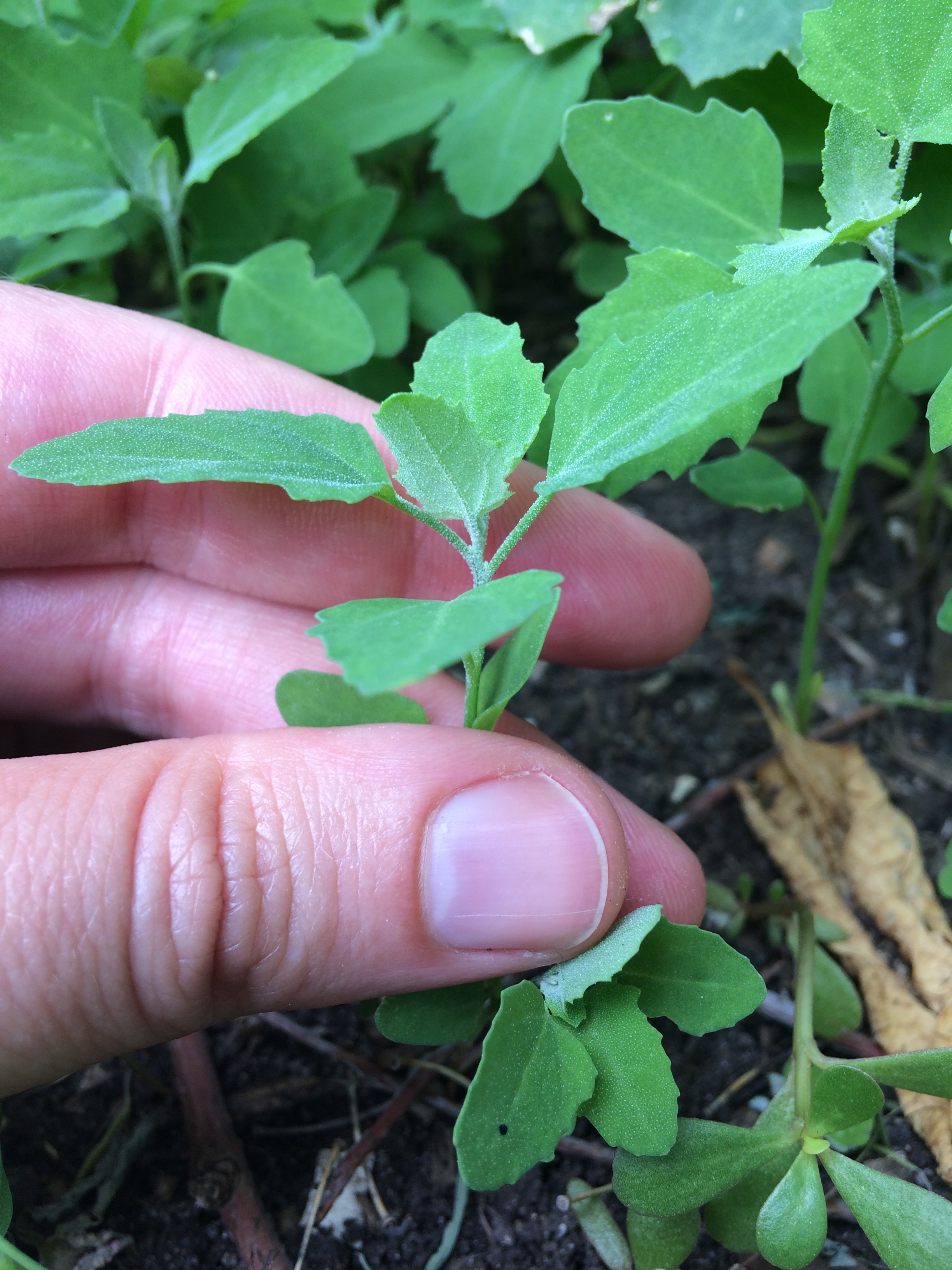


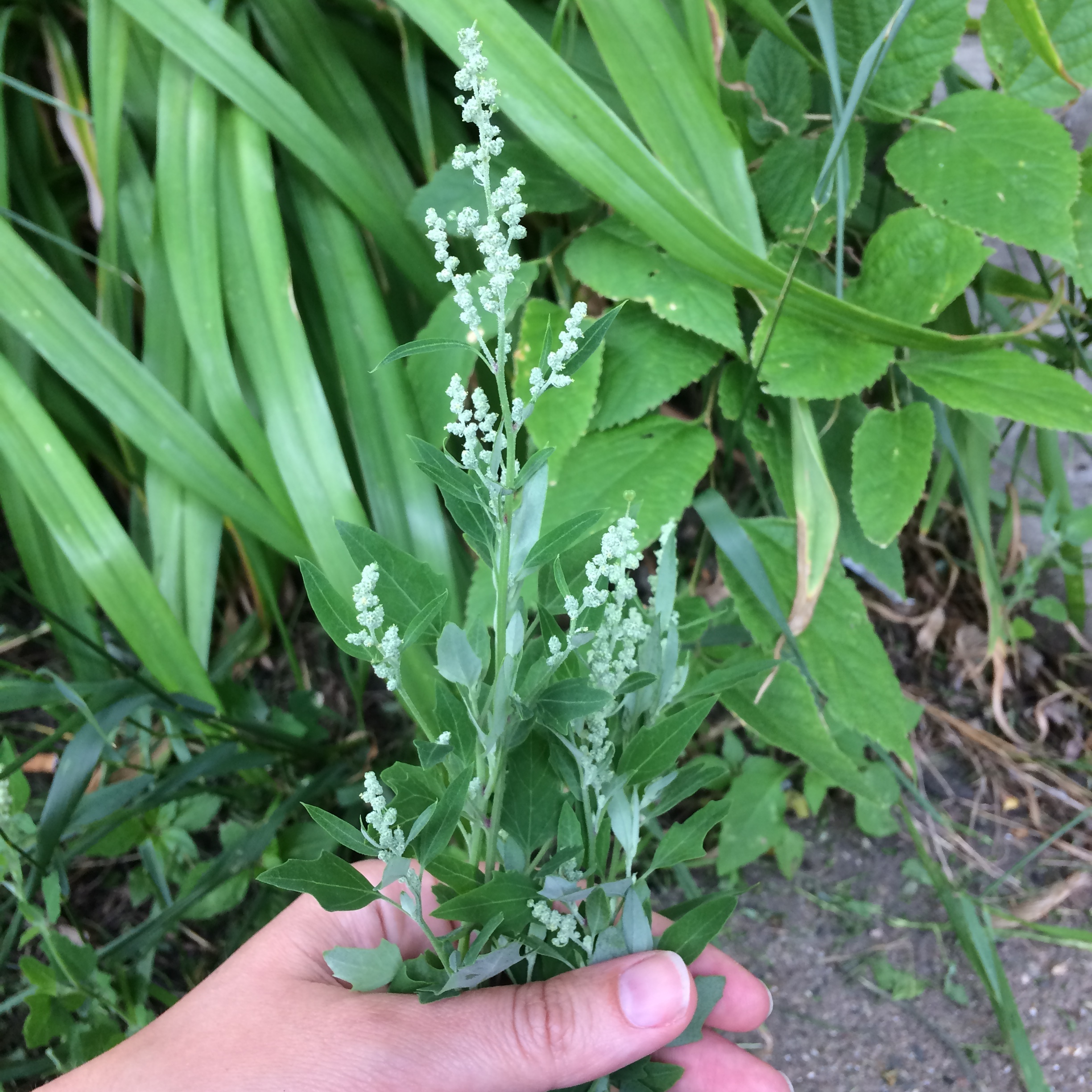
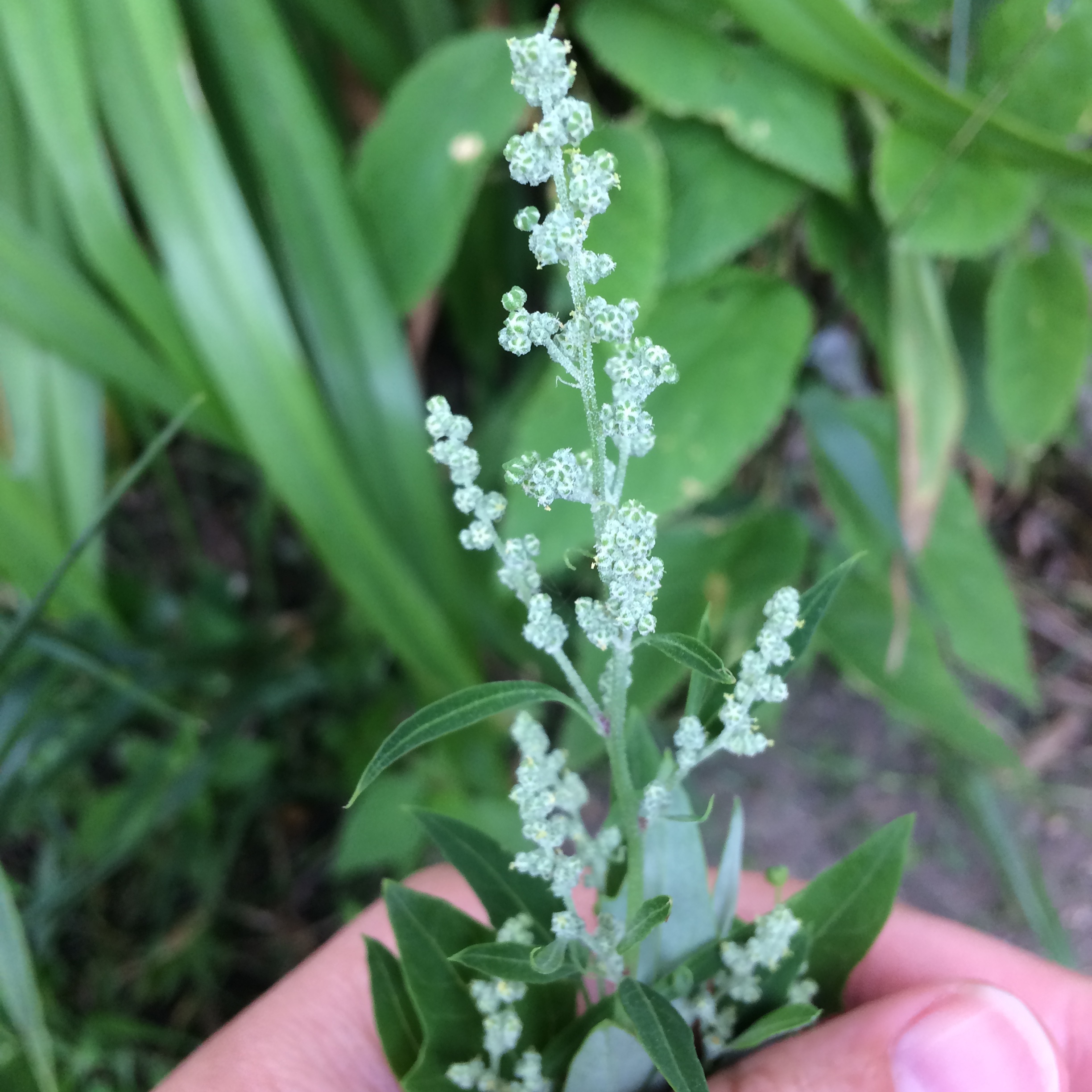
Beginning in late spring, lamb's quarters sends up shoots and tender leaves. In the Minneapolis area, they become noticeable in late May and early June. When first appearing, the leaves are opposite, triangular- to oval-shaped, and covered with a whitish mealy coating. The leaf margins may be coarsely toothed, wavy, or smooth. As the plant matures, the leaves become alternate, and often more triangular- or diamond-shaped. The leaf margin is typically coarsely toothed. The underside of the leaf and the new growth at the top of the plant retain the whitish dusting. Petioles (leaf stems) and stalks are often tinged with purple.
When lamb's quarters goes to flower, it has reached its full height. In the Minneapolis area it typically flowers from late June to mid-July. If growing in ideal conditions, the plant can reach heights of up to six feet. More typically they grow from two to three feet tall. The flower is inconspicuous: small, roundish or oval, light green in color, and growing in clusters at the top of the stalk. Leaves at the top of the stalk are typically smaller, lance-shaped, and with little-to-no serration.
Come fall (mid-September to early October around Minneapolis), the flowerheads become brown and papery, and develop seeds on the inside. When mature, the seeds are black to brown, shiny, and somewhat flattened. However, you will need to rub off the chaff to see the actual seed.
Look-Alikes
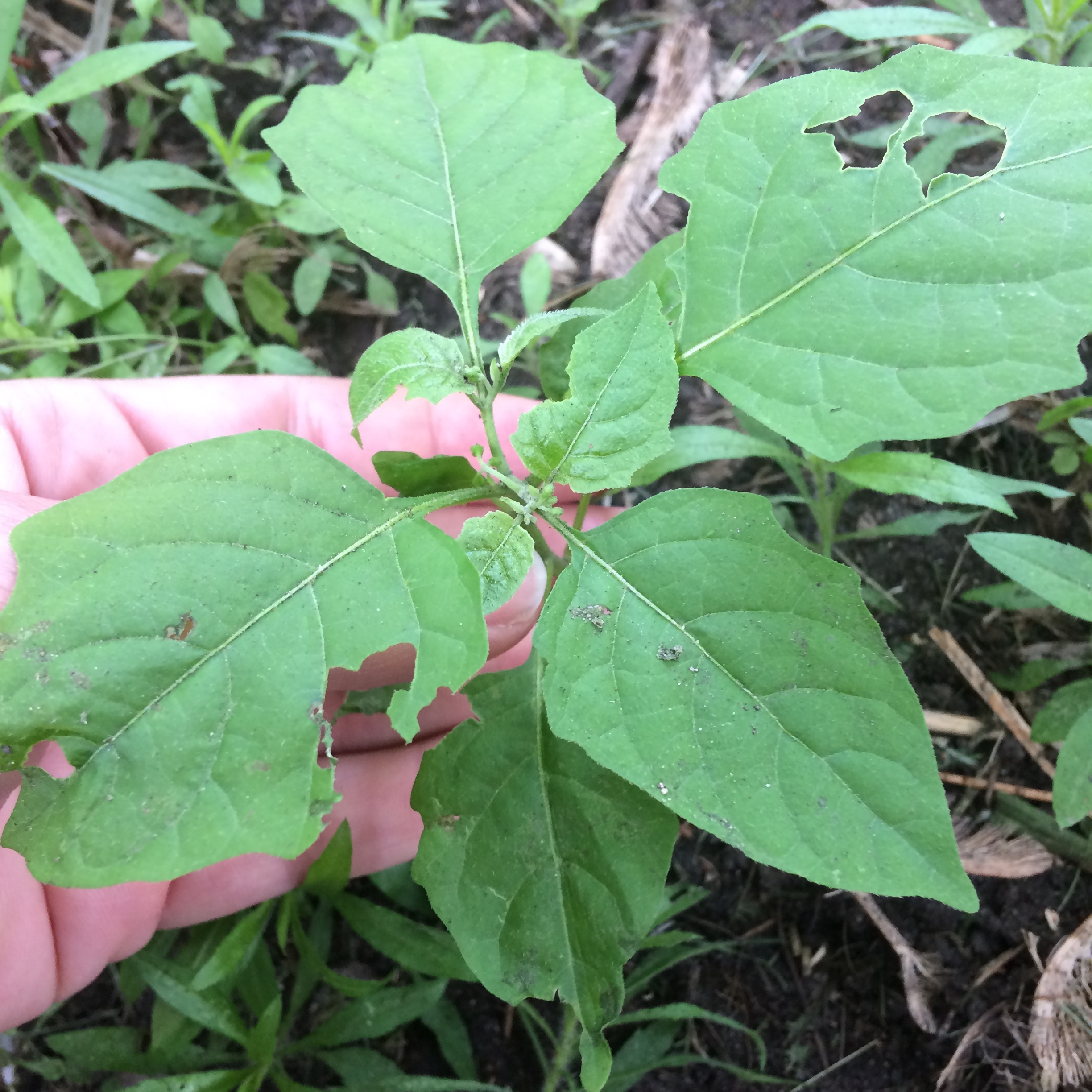
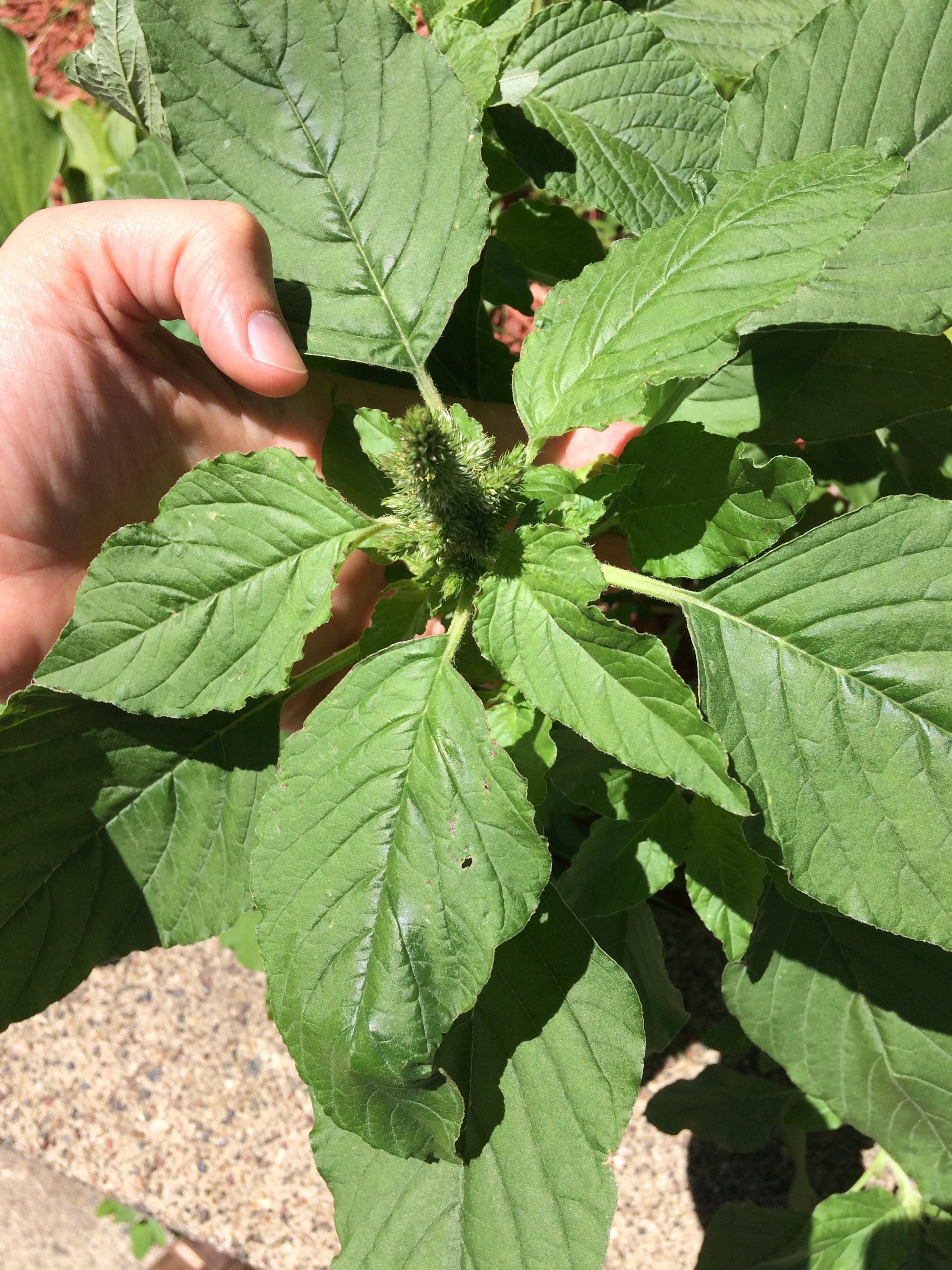
Lamb's quarters is part of the goosefoot family, which has been reclassified as a subfamily of the amaranth family. Some plants in this family look very similar, but most of them are edible. Edible look-alikes include certain amaranth species (Amaranthus spp.) and orache species (Atriplex spp.). Also edible, but not in the goosefoot family, is black nightshade (Solanum nigrum). (Black nightshade is often miscategorized as poisonous. It is edible, but does require more caution than lamb's quarters. I would recommend staying clear of the greens unless you're an experienced forager.) The only poisonous look-alike I can think of is belladona (Atropa belladonna), but in my opinion it doesn't look much like lamb's quarters at all; even a basic understanding of lamb's quarters' characteristics will prevent confusion between the two.
Amaranth is distinguished by it's smooth leaf margins, leaves that are diamond- to oval-shaped, and spiky flowers at the top of the plant. Here are some photos of various amaranth species.
Orache can look very similar to lamb's quarters. Since lamb's quarters and orache both are variable plants, the best way to distinguish them is by the flowers and seeds. Lamb's quarter's flowers are rounded or oval, while the female flowers of orache have two triangular- or diamond-shaped bracteoles. These bracteoles eventually enclose the seeds. For pictures of the common orache and links to other species in the Atriplex genus, see NatureGate.
Black nightshade bears only a faint resemblance to lamb's quarters. The leaves are generally egg-shaped, with smooth or wavy margins. Some leaves may be sparsely toothed, but they are not as consistently toothed as lamb's quarters' leaves. Furthermore, the petioles (leaf stems) of black nightshade are "winged," meaning that a narrow bit of leaf runs all the way down the stem. The flowers differ vastly from those of lamb's quarters, being 5-petaled, white or violet, much larger at 1/4" to 1/3" across, and growing in small clusters along the stem. Finally, black nightshade produces small berry clusters that start green and become black when fully ripe. Here are more pictures and identification marks.
Belladonna (also called deadly nightshade) is a European native with limited range in the US. I've never personally seen it, but as a potentially deadly plant, it's good practice to familiarize yourself. It bears much closer resemblance to black nightshade than lamb's quarters. The leaves are oval and untoothed. The flowers grow singly from the axils of upper leaves (where the petiole meets the stalk.) They are brownish purple in color, with five fused petals. The berries are also single, initially green and black when fully ripe, and surrounded by a star-shaped calyx (modified leaves) that extends far beyond the fruit itself. Pictures can be found on Nature Spot.
How to Harvest
Washed Lamb's quarters tops
Pick the entire top of lamb's quarters while tender and young. It should be no more than about two-thirds its full height, and should not be flowering. Simply break off the top 6 to 8 inches. If the stem doesn't break easily, it's too tough to eat. The greens and stems can be eaten raw, steamed, or sautéed. They easily replace spinach in recipes. Just be aware that like spinach, they contain oxalic acid, which can interfere with calcium absorption. Cooking destroys the compound. In addition, I have read warnings that they can concentrate nitrogen. I know that nitrates in drinking water can be dangerous, especially to babies and pregnant women, but haven't found any conclusive information about the effects of excess nitrogen in plants. As a precaution, don't eat the greens in areas that may have been treated with chemical fertilizers.
As a relative of amaranth and quinoa, the seeds are edible as well. Wait for the seed casing to turn brown and papery before harvesting. Pick the entire top, then hang upside down to dry in a well-ventilated area with low humidity. Place a sheet under the drying plants to catch the seeds that fall off. Use your hands to remove the remaining seeds. Rub off the chaff and winnow. Rinse and dry the seeds before use to remove bitter saponins. Grind for flour, or add to rice, porridge, or other grains.
What's in a Name
I haven't even mentioned how healthy this plant is! Lamb's quarters greens are loaded with vitamins A and C, calcium, potassium, and magnesium. I've read that they were originally called "lamb's quarters" because they were thought to be as nutritious as a leg of lamb! With it's abundance, delicious taste, and nutritional value, it's a plant well worth learning. I encourage everyone to try it!
Join Us on Patreon!
If you like our foraging tutorials, please consider joining us on Patreon! It’s a simple way for you to help Four Season Foraging keep producing the informative content that you enjoy.

